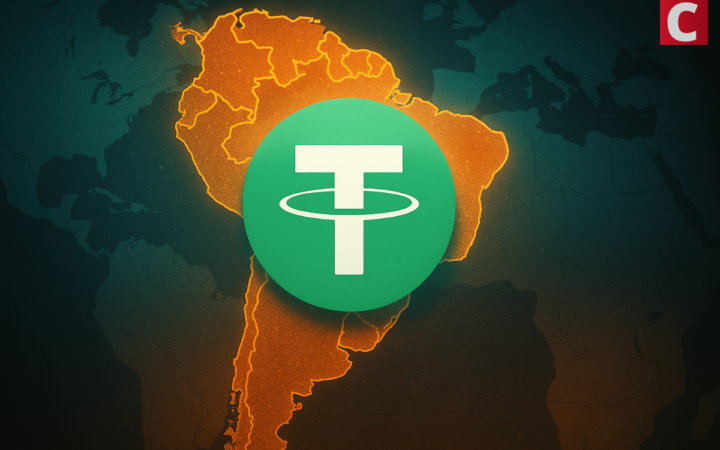
Tristan is a technology journalist and editorial leader with 8 years of experience covering science, deep tech, finance, politics, and business. Before joining Coinspeaker, he wrote for Cointelegraph and TNW.
S&P Global Ratings has downgraded USDT to its lowest stability grade of “5,” citing increased exposure to high-risk assets and structural weaknesses.
 Editor Marco T. Lanz
Updated
2 mins read
Editor Marco T. Lanz
Updated
2 mins read

The world’s largest stablecoin issuer, Tether, has received a grade of “5,” the lowest possible, in an assessment from S&P analysts measuring USDT‘s ability to stay pegged to the US dollar.
Analysts at S&P had previously rated USDT a 4, indicating “constrained” ability to remain pegged to the dollar. Its new rating of “5” drops that down to “weak.” In a Nov. 26 report detailing their decision to downgrade USDT, the analysts cited increasing exposure to “high-risk assets” including Bitcoin BTC $89 916 24h volatility: 3.5% Market cap: $1.79 T Vol. 24h: $68.12 B , gold, secured loans, corporate bonds, and “other investments,” as the primary reason for the lower grade.
The report also flagged what it referred to as “other weaknesses” with USDT’s structure and distribution. These included limited transparency on reserve management and risk appetite, lack of a robust regulatory framework, no asset segregation to protect against the issuer’s insolvency, and limitations to USDT’s primary redeemability.
Tether’s USDT has a market capitalization of about $185 billion as of the time of this article’s publication, according to CoinMarketCap. This makes up a lion’s share of the total stablecoin market with the next closer competitor, Circle’s USDC USDC $1.00 24h volatility: 0.0% Market cap: $75.45 B Vol. 24h: $13.08 B , trailing in second place with a capitalization of around $75 billion. By the numbers, USDT has a larger share than USDC and the rest of the top 10 stablecoins by market cap combined.
With 135 billion of U.S Treasuries, Tether is now the 17th largest holder of U.S debt, passing also South Korea.
Soon Brazil! pic.twitter.com/wUDyvGcSHE— Paolo Ardoino 🤖 (@paoloardoino) October 29, 2025
The S&P assessment noted Tether’s market share and lauded USDT’s relative stability in its review, however, with Bitcoin trading at six-month lows and the overall cryptocurrency market experiencing a significant downturn, analysts noted that the downgrade was considered a “neutral” movement instead of a “negative” classification.
The major sticking point in the report was the company’s treasury. According to the S&P analysts, high-risk assets made up 24% of Tether’s total reserves as of Sept. 30, 2025, a 7% increase year-over-year.
The analysts also worried about the firm’s exposure to Bitcoin. They wrote that “Bitcoin represents 5.6% of USDT in circulation, exceeding the 3.9% overcollateralization margin associated with a collateralization ratio of 103.9%.”
According to the report, further decline in the price of Bitcoin or the value of other higher-risk assets could reduce Tether’s collateral coverage and “result in USDT becoming undercollateralized.”
Disclaimer: Coinspeaker is committed to providing unbiased and transparent reporting. This article aims to deliver accurate and timely information but should not be taken as financial or investment advice. Since market conditions can change rapidly, we encourage you to verify information on your own and consult with a professional before making any decisions based on this content.

Tristan is a technology journalist and editorial leader with 8 years of experience covering science, deep tech, finance, politics, and business. Before joining Coinspeaker, he wrote for Cointelegraph and TNW.




